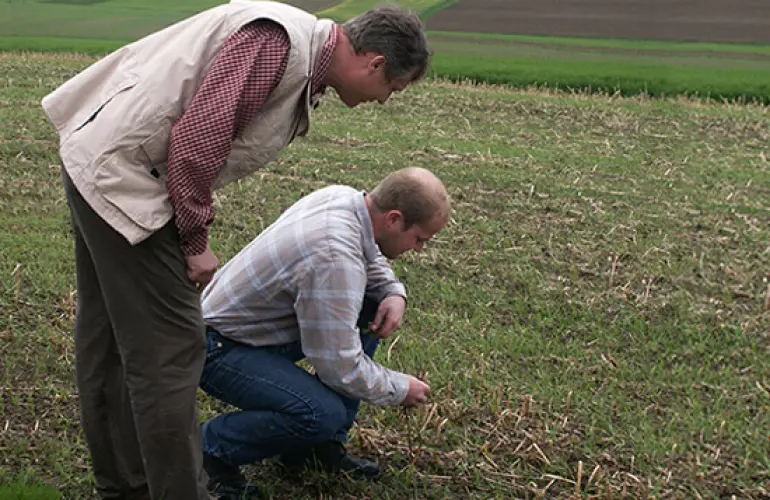
By reducing tillage, Minimum Tillage Methods limit working time and power requirements. Minimum tillage techniques prepare the land for seeding without the plough, using shallow operating methods. Fewer operations and a lower traction power requirement have a direct impact on work time and fuel consumption. Arvalis estimates than mechanisation and labour costs account for around 45% of total farm costs. Consequently, reducing them has a direct impact on profits.
Less time, less fuel
A major impact of not using the plough is a reduction in work time. Stubble cultivation is twice as quick as ploughing.
No-till reduces work time considerably, with savings of 30 to 50%. Arvalis estimates that the total operating time for sowing wheat decreases from 4 hours with the plough to 2.5 hours with no-till1.
The Chamber of Agriculture in Brittany, France, calculated the time it takes to sow maize: two and a half hours when the plough is used, one and a half hours with the Minimum Tillage Method of shallow tillage, and three quarters of an hour with no-till. While less time is spent in the tractor, time must be spent keeping a close eye on your fields.
Changing cultivation practices also impacts fuel consumption: less time and a lower power requirement clearly reduce the bills.

According to the Chamber of Agriculture in Brittany, France, it takes 30 litres of fuel to sow a hectare of wheat on ploughed land, 22 litres with the Minimum Cultivation Method of shallow tillage, and only 5 litres with no-till. The difference is even greater for a hectare of maize: 40 litres when ploughing the area, 20 litres with shallow tillage, and less than 10 litres with no-till.
Planting costs are directly impacted. Minimum Tillage Methods reduce costs by 30% and no-till by 40 to 50%. According to an estimation by the Chamber of Agriculture in Brittany, the cost of sowing wheat is around €80/ha with the plough and €65/ha for shallow tillage (Minimum Tillage). The cost of planting maize is about €120/ha when the area is ploughed as opposed to €75/ha for Minimum Tillage.
A positive economic performance
Minimum Tillage Methods reduce planting costs, but does this hold true when expenses and products are taken into account?
Simplifying planting techniques can penalise yield. A comparative study carried out by Arvalis on European farms found a difference in yield of 7.3% between ploughed plots and no-till plots. However, long-term plot comparisons show that after a few years, the difference in yield between ploughing, Minimum Tillage, and no-till is slight. This is due to the positive effect of no-plough methods on soil life and water retention that counterbalance possible inferior planting quality.
After about ten years of trials, Arvalis concluded that net profit was similar for the different cultivation techniques as the lower mechanisation costs for no-till are offset by higher operating costs, especially weed control.
Source:
1 https://www.arvalis.fr/infos-techniques/les-economies-de-charges-la-cle
